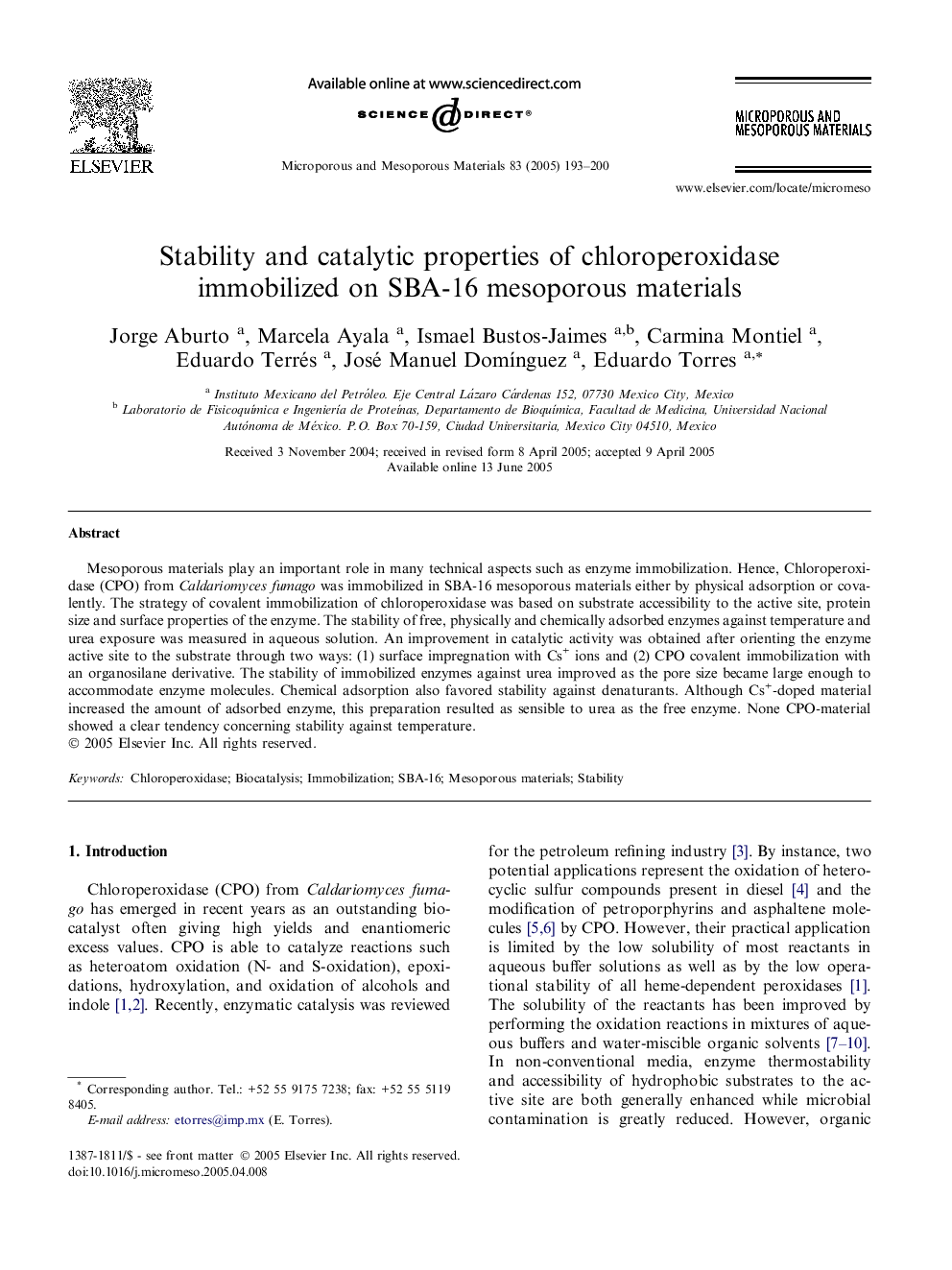| Article ID | Journal | Published Year | Pages | File Type |
|---|---|---|---|---|
| 9617650 | Microporous and Mesoporous Materials | 2005 | 8 Pages |
Abstract
Mesoporous materials play an important role in many technical aspects such as enzyme immobilization. Hence, Chloroperoxidase (CPO) from Caldariomyces fumago was immobilized in SBA-16 mesoporous materials either by physical adsorption or covalently. The strategy of covalent immobilization of chloroperoxidase was based on substrate accessibility to the active site, protein size and surface properties of the enzyme. The stability of free, physically and chemically adsorbed enzymes against temperature and urea exposure was measured in aqueous solution. An improvement in catalytic activity was obtained after orienting the enzyme active site to the substrate through two ways: (1) surface impregnation with Cs+ ions and (2) CPO covalent immobilization with an organosilane derivative. The stability of immobilized enzymes against urea improved as the pore size became large enough to accommodate enzyme molecules. Chemical adsorption also favored stability against denaturants. Although Cs+-doped material increased the amount of adsorbed enzyme, this preparation resulted as sensible to urea as the free enzyme. None CPO-material showed a clear tendency concerning stability against temperature.
Related Topics
Physical Sciences and Engineering
Chemical Engineering
Catalysis
Authors
Jorge Aburto, Marcela Ayala, Ismael Bustos-Jaimes, Carmina Montiel, Eduardo Terrés, José Manuel DomÃnguez, Eduardo Torres,
